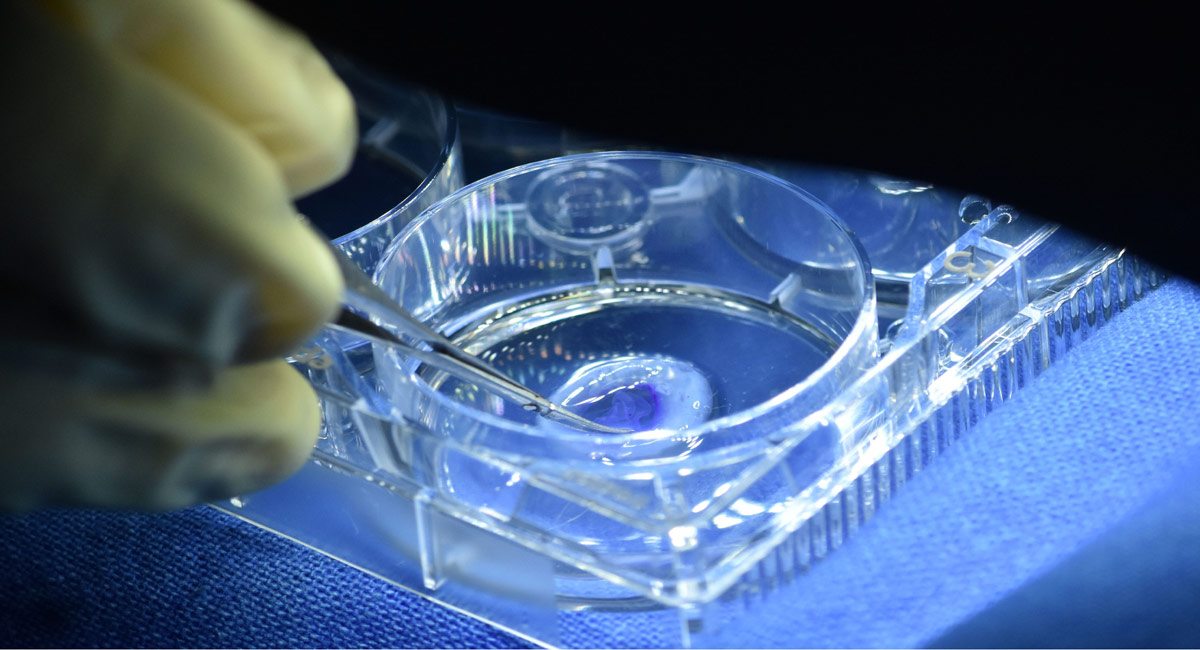Hyderabad scientists achieve lasting cornea repair using stem cells

The cornea, which is the clear, transparent outer layer at the front of the eye, can get severely damaged during accidents such as chemical burns, abrasions, contact with foreign body, potentially leading to blindness
Published Date – 3 May 2025, 08:13 PM

Hyderabad: A novel and ground-breaking surgical technique developed by eye researchers from Hyderabad-based L V Prasad Eye Institute (LVPEI), involving the application of stem cells to repair the cornea, is providing lasting restoration of corneal surface and good long-term vision rehabilitation among rehabilitation among patients.
The cornea, which is the clear, transparent outer layer at the front of the eye, can get severely damaged during accidents such as chemical burns, abrasions, contact with foreign body, potentially leading to blindness. To combat the challenge of severe corneal damage, LVPEI researchers had developed a novel technique wherein stem cells from the unaffected eye of the individual are collected, processed and transplanted to the affected eye.
The long-term impact study of this novel procedure, conducted by LVPEI researchers and published in American Journal of Ophthalmology (April/May 2025), indicated that 76 percent of the patients who underwent this treatment, showed improved visual acuity over an 18-month period.
In the study titled ‘Five to twelve year outcomes of Autologous Simple Limbal Epithelial Transplantation: Long-Term Corneal Epithelia Imaging and Pehontypic Analysis’, Dr Swapna S Shanbhag and Dr Anahita Kate along with others at LVPEI, reported that treatment showed restoration of corneal epithelium in 68 percent of eyes with ocular burns.
In the study, the LVPEI researchers presented an assessment of the corneal epithelium of 47 patients (94 eyes) who undergone the stem cell treatment procedure 5 to 12 years prior. The researchers assessed whether the procedure restored the cornea’s typical features, the corneal epithelial phenotype (CEP), normal corneal epithelial thickness (CET), corneal reflectivity, and transparency measured using densitometry.
According to LVPEI, the researchers found that eyes of 68 percent of the patients maintained a successful outcome while the rest had partial or total failure over this long follow-up period.
Different imaging techniques employed by LVPEI researchers indicated that the CEP was normal in 8 percent of the limbal stem cell recipient eyes. About 70 percent of the eyes that underwent the stem cell therapy saw significant post-operative improvement in visual acuity.
Highlights:
• Stem cell therapy of LVPEI researchers to restore corneal function yielding positive results
• Long terms study indicates restoration of corneal function
• About 70 percent of eye that underwent stem cell treatment, showed significant post-operative improvement
• LVPEI findings indicate stem cell treatment offers lasting restoration of corneal surface
• Long term follow-up of patients who undergo this treatment is crucial






